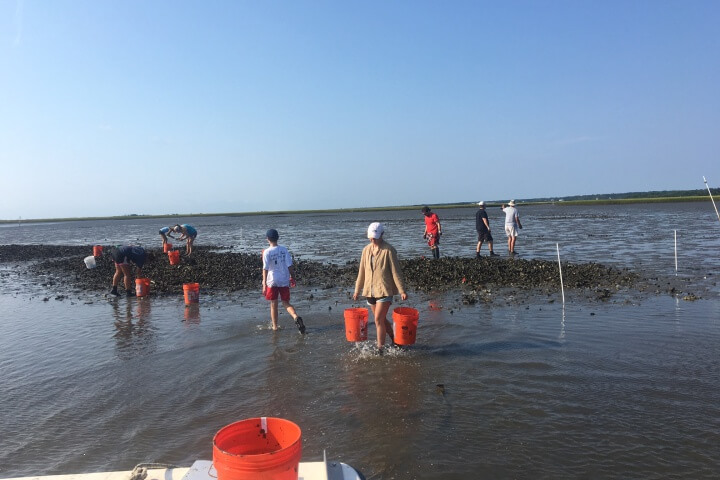North Carolina Oyster Farms Provide Several Ecosystem Benefits
The Takeaway: A research team’s discoveries are helping agencies and committees guide oyster aquaculture expansion in the state.

Photo credit: NOAA
Wild oysters provide ecosystem services that are well-documented, such as improving water quality and supplying aquatic animal habitat. Until recently, however, there was scant scientific consensus on whether shellfish aquaculture provided similar benefits. Now a North Carolina research team has discovered that local oyster farms contribute to the natural environment in much the same way as wild oyster groupings do. Partners in this study included the National Estuarine Research Reserves’ Science Collaborative, North Carolina Research Reserve, Bald Head Island Conservancy, and University of North Carolina-Wilmington.
Major study discoveries are listed below.
- Water quality: Scientists found similar water quality across farms and in farms, compared to non-farmed areas.
- Sediments: Scientists found limited, localized increases in ammonium under farms in some months (ammonium in high amounts is correlated with algal blooms and other water-quality problems).
- Wild oysters: Scientists found higher density and larger wild oysters on reefs near the farms.
- Habitat: Scientists found a higher abundance of aquatic animals moving around both wild reefs and farm structures than they found in adjacent, non-oyster-reef habitats.
- Nitrogen: Scientists found that farmed oysters removed watershed nitrogen by a significant amount, which benefits water quality—a conservative estimate in avoided nitrogen-treatment costs was $1,600 to $7,300 per leased acre per year.
The research team also created a decision-support tool to guide discussions on when it is appropriate to site aquaculture farms within coastal reserves.
View this factsheet or this project page to learn more. The research reserve system’s Science Collaborative, which provided $673,397 in project support, is co-administered by NOAA and the University of Michigan. (2022)
Partners: Bald Head Island Conservancy, National Estuarine Research Reserve System’s Science Collaborative, North Carolina Research Reserve, University of North Carolina-Wilmington
PRINT